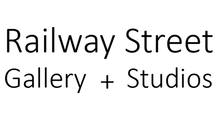Catherine Macdonald
VIEW WORKS
Since 2001 I have been working consistently in drypoint on aluminium. It can be a very quick process and the lines that it produce are similar to drawing. I work a lot with line contrasted with silhouette. I like to be able to suggest form of an object without having to use shading and tone. The aluminium plate I use is ex-newspaper printing plates, which I work on the back of. To get the image on the plate I whatever I can to make a scratch mark, this generally ends up being a metal point, sandpaper and Dremel. The finished plate is printed in the same way as an etching - thick ink is wiped over the plate and into the scratches, the excess is cleaned off and the plate and some damp paper is put through the press. The Image that is transferred on to the paper is the reverse of what was drawn on the plate. Drypoint is often distinguishable by a “fuzziness” to its lines which is caused by the burrs formed when making marks in the metal. When wiping a plate I often play with the amount of plate tone - the residue ink - that is left giving my work an element of mono printing.
This series of works was begin in Dunedin while on the 2020 Caselberg Trust In Print Residency. It looks at how people spend their time finding ways to find peace and relaxation in what has been a turbulent couple years. Taking time out of daily life to escape via reading, walking, being in nature. Following the lead of our animal companions, to just be in this world.
Since 2001 I have been working consistently in drypoint on aluminium. It can be a very quick process and the lines that it produce are similar to drawing. I work a lot with line contrasted with silhouette. I like to be able to suggest form of an object without having to use shading and tone. The aluminium plate I use is ex-newspaper printing plates, which I work on the back of. To get the image on the plate I whatever I can to make a scratch mark, this generally ends up being a metal point, sandpaper and Dremel. The finished plate is printed in the same way as an etching - thick ink is wiped over the plate and into the scratches, the excess is cleaned off and the plate and some damp paper is put through the press. The Image that is transferred on to the paper is the reverse of what was drawn on the plate. Drypoint is often distinguishable by a “fuzziness” to its lines which is caused by the burrs formed when making marks in the metal. When wiping a plate I often play with the amount of plate tone - the residue ink - that is left giving my work an element of mono printing.
This series of works was begin in Dunedin while on the 2020 Caselberg Trust In Print Residency. It looks at how people spend their time finding ways to find peace and relaxation in what has been a turbulent couple years. Taking time out of daily life to escape via reading, walking, being in nature. Following the lead of our animal companions, to just be in this world.
